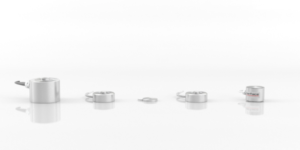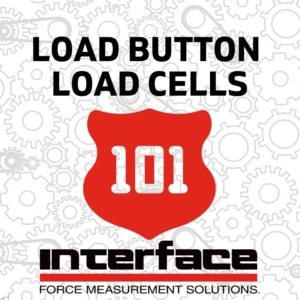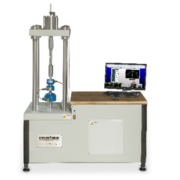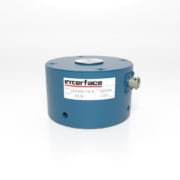Load Button Load Cells 101
 Manufactured devices, technology advancements and product designs are getting smaller and smaller as innovations demand less space to do more for their consumers. As engineers are designing products with miniaturized components, they also need high quality test and measurement solutions that produce accurate results within these smaller testing spaces.
Manufactured devices, technology advancements and product designs are getting smaller and smaller as innovations demand less space to do more for their consumers. As engineers are designing products with miniaturized components, they also need high quality test and measurement solutions that produce accurate results within these smaller testing spaces.
Interface has created a series Load Button Load Cells to meet these exact requirements. These load buttons are designed and manufactured to specifically fit into small and confined spaces, providing the precision-based measurements as expected from larger load cells.
Interface Load Button Load Cells are compact strain gauge-based sensors used in a wide variety of applications, including test and measurement and for general measurement applications. Interface standard LBM and LBS Load Button Load Cells can fulfill the need for compression force measurements at a very respectable precision level for most applications.
 Product diameters range from 1 inch to 3 inches, with heights from 0.39 inch to 1.5 inches. The shaped load button load cell has a spherical radius to help confine misaligned loads to the primary axis of the cell. And while these products are small, they are capable of measuring compression forces from 10 lbf all the way to 50,000 lbf. The spherical radius of our Load Cell Load Buttons also help to confine misaligned loads to the primary axis of the cell.
Product diameters range from 1 inch to 3 inches, with heights from 0.39 inch to 1.5 inches. The shaped load button load cell has a spherical radius to help confine misaligned loads to the primary axis of the cell. And while these products are small, they are capable of measuring compression forces from 10 lbf all the way to 50,000 lbf. The spherical radius of our Load Cell Load Buttons also help to confine misaligned loads to the primary axis of the cell.
Interface Load Button Load Cells
- LBM Compression Load Button Load Cell with capacities from 25 to 50k lbf, are environmentally sealed and temperature compensated. Buy now using our expedited QuickShip48 e-commerce online service.
- LBS Miniature Compression Load Button Load Cell is a small load cell with capacities ranging from 5 lbf to 1k lbf. It can be as small as .12″ in height.
- LBMP Overload Protected Compression Load Button Load Cell is overload protected, temperature compensated and has a small diameter. Its capacities range from 0.01 kN to 100 kN (2.25 lbf to 22.5k lbf).
- LBMU Ultra Precision Compression Load Button Load Cell is superior in accuracy to any other load button with enhanced eccentric load rejection. Capacities are from 100 to 1k lbf.
Interface’s Custom Solutions Team and Product Engineers can also help to design a specific size and capacity to fit our customer’s exact requirements. Let us know what you need by contacting us here.
Load Button Load Cells Functionality and Proper Use
Applications that use compression loads on load button load cells requires an understanding of the distribution of forces between surfaces of various shapes and finishes.
The first and most important rule is to always avoid applying a compression load flat-to-flat from a plate to the top surface of a load button hub. The reason for this is simple, it’s impossible to maintain two surfaces parallel enough to guarantee that the force will end up being centered on the primary axis of the load button load cell. Any slight misalignment, even by a few micro-inches, could move the contact point off to one edge of a hub, thus inducing a large moment into the measurement.
Minor misalignments merely shift the contact point slightly off the centerline. In addition to compensating for misalignment, the use of a load button load cell of the correct spherical radius is necessary to confine the stresses at the contact point within the limits of the materials. Generally, load button load cells and bearing plates are made from hardened tool steel, and the contacting surfaces are ground to a finish of 32µ inch RMS. If you use too small of a radius it will cause a failure of the material at the contact point, and a rough finish will result in galling and wear of the loading surfaces.
Interface Load Button Load Cells in the Real World
The evolving world of technology and product design has created a high demand for these types of small and accurate testing equipment. Innovative industries are looking at new ways to fit more capabilities into a single device that is the same size or even smaller. OEM applications that require this type of testing equipment include medical devices, drones, industrial automation, packaging and robotics.
We have highlighted a few examples of how Interface Load Button Load Cells have been used in the medical industry to solve complex challenges related to measuring compression force in confined spaces.
Measuring Vascular Clamp Force
A customer in the medical industry wanted to test various types of vascular clamps to see which type would generate the best clamping force for surgery. Using a Model LBS Load Cell, the clamps were secured onto the compression button. A Model 9330 High Speed Data Logging Indicator provided compression force measurements and allowed the customer to determine the most appropriate clamp type. Read the full application use case here.
Optimizing Surgical Stapler Force
Another customer needed to optimize the design of their surgical stapler to make it easier and more efficient for a medical professional to use. The original equipment manufacturer mounted the surgical stapler onto a test rig to enable force verification, and then connected a Model LBMU Compression Load Cell Button to a Model 9890 Load Cell Indicator. The indicator would collect compression force data from the stapler, and that data was then analyzed to allow the OEM to determine the design changes needed to reduce the amount of force applied to use the stapler. Learn more about this application here.
For more information on our expanding lineup of Load Button Load Cells, see the overview below. In addition, say tuned in to the IQ Blog for an exciting announcement about new Interface Load Button Load Cell technology. Most standard Load Button Load Cells are available to ship within 2 business days. Contact us for more information or visit our QS48 now.
Click here to see the full line of Load Button Load Cells.









